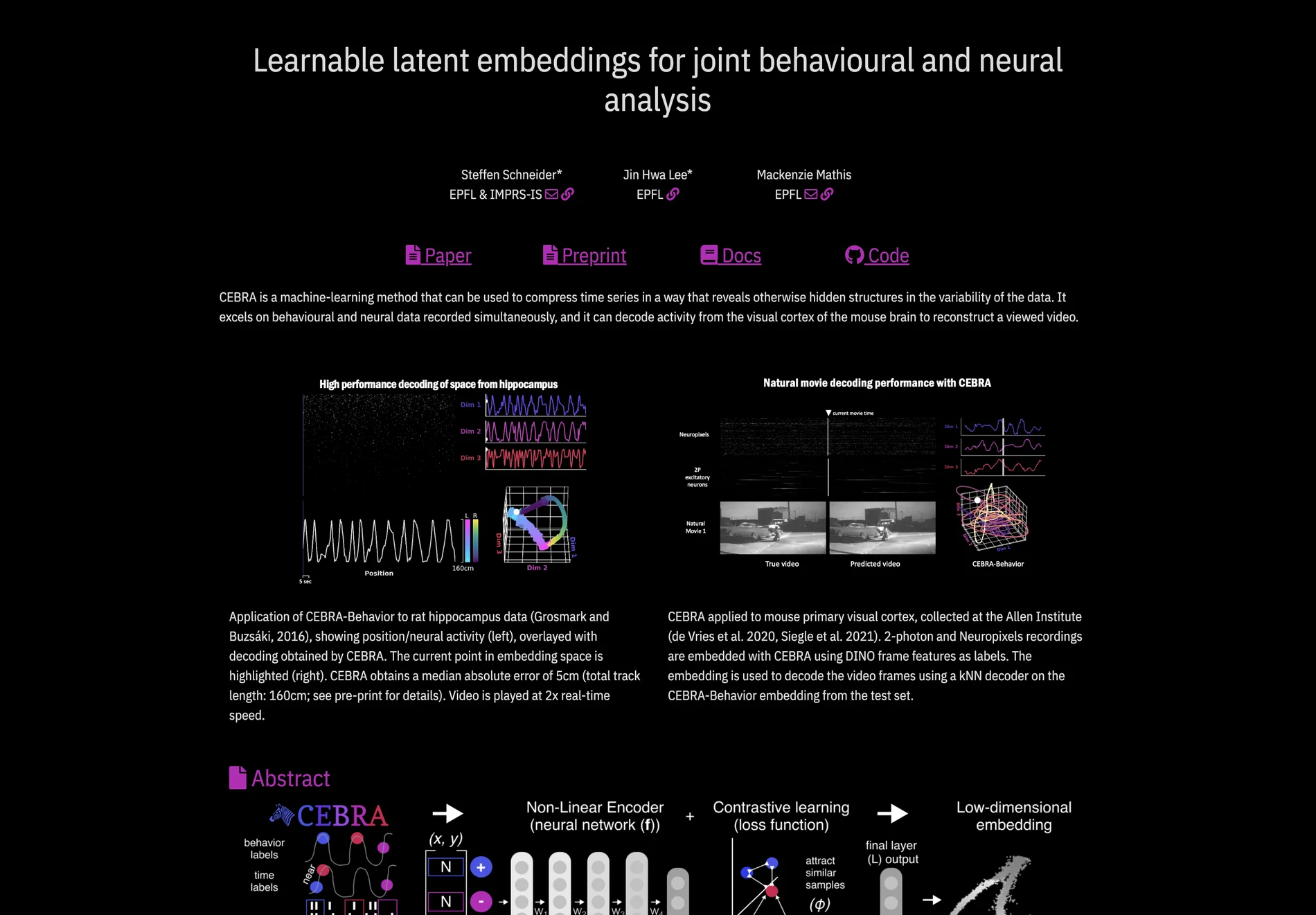Learnable Latent Embeddings for Joint Behavioural and Neural Analysis
CEBRA, developed by Steffen Schneider, Jin Hwa Lee, and Mackenzie Mathis, is a groundbreaking machine-learning method designed to compress time series data in a manner that unveils hidden structures within the variability of the data. This tool is particularly adept at handling behavioral and neural data recorded simultaneously, offering the capability to decode activity from the visual cortex of a mouse brain to reconstruct a viewed video.
Key Features
- Advanced Data Compression: CEBRA excels in compressing time series data, making it easier to identify patterns and structures that would otherwise remain hidden.
- Joint Analysis: It supports the analysis of both behavioral and neural data, providing a comprehensive view of the interactions between these two domains.
- High-Accuracy Decoding: CEBRA can decode neural activity to reconstruct videos, demonstrating its potential in neuroscience research.
Use Cases
CEBRA has been successfully applied to various datasets, including:
- Rat Hippocampus Data: Demonstrating position/neural activity decoding with a median absolute error of 5cm.
- Mouse Primary Visual Cortex Data: Showcasing the ability to decode video frames using a kNN decoder on the CEBRA-Behavior embedding.
Applications in Neuroscience
The primary goal of CEBRA is to map behavioral actions to neural activity, a fundamental objective in neuroscience. As recording capabilities for large neural and behavioral datasets improve, CEBRA stands out as a tool that can model neural dynamics during adaptive behaviors, uncovering neural representations.
Conclusion
CEBRA represents a significant advancement in the field of neuroscience, offering a novel encoding method that leverages joint behavioral and neural data to produce high-performance latent spaces. Its applications range from decoding neural activity to reconstructing videos, making it a valuable tool for researchers in the field.
For more information, visit the and explore the official .
